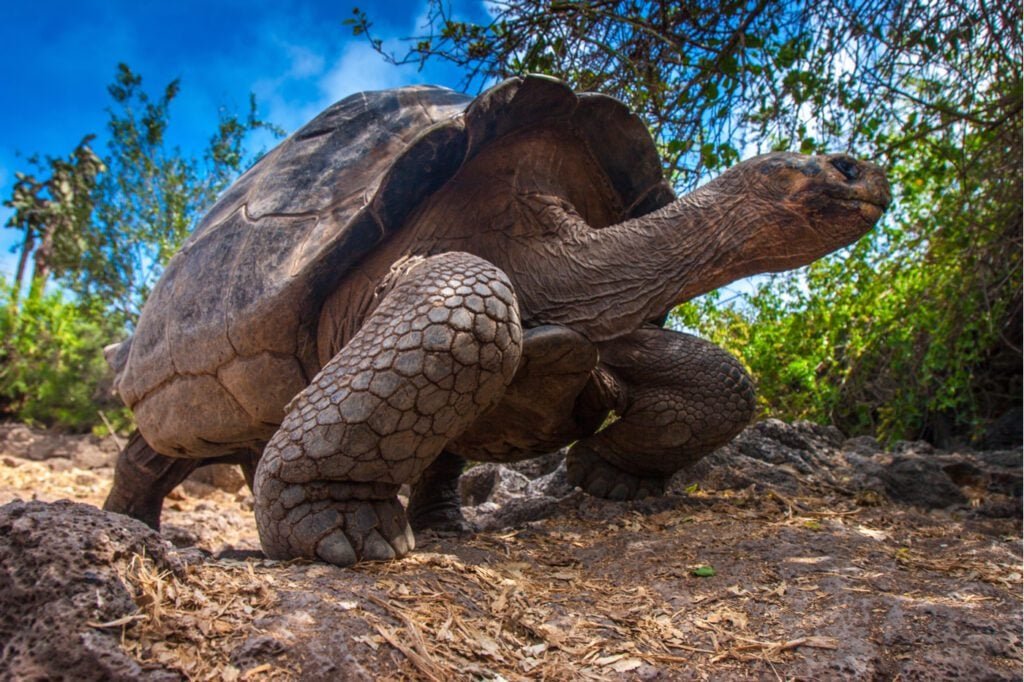
Far out in the Pacific Ocean, nearly 1,000 kilometers off the coast of Ecuador, lies a group of volcanic islands teeming with bizarre creatures, surreal landscapes, and an extraordinary legacy of scientific discovery. Known as the Galápagos Islands, this remote archipelago is not only a sanctuary for wildlife found nowhere else on Earth—it is also the place that profoundly influenced Charles Darwin and led to the development of one of the most transformative ideas in science: the Theory of Evolution by Natural Selection.
From giant tortoises and marine iguanas to flightless cormorants and finches with peculiar beaks, the Galápagos Islands offer a glimpse into how life evolves in isolation. Each island serves as a natural laboratory, where evolutionary processes unfold in ways that are visible, measurable, and still astonishing nearly two centuries after Darwin’s visit.
This is the story of how a cluster of remote islands changed the way we understand life on Earth—and why they continue to captivate scientists, travelers, and conservationists today.
A Young Naturalist’s Voyage
In 1831, Charles Darwin, a 22-year-old naturalist and recent graduate of Cambridge University, embarked on a five-year voyage aboard HMS Beagle, a British Royal Navy survey ship. The goal was to chart the coast of South America, but for Darwin, it became an intellectual odyssey that would alter the course of science forever.
After more than three years exploring South America, the Beagle arrived at the Galápagos Islands in September 1835. Over the next five weeks, Darwin visited several of the islands—including San Cristóbal, Floreana, Isabela, and Santiago—and meticulously recorded his observations of the landscapes, geology, and wildlife.
Though he didn’t yet realize it, the data and specimens he collected in the Galápagos would serve as crucial evidence for his groundbreaking theory of evolution.
A Laboratory of Life: The Galápagos Ecosystem
The Galápagos Archipelago consists of 13 main islands, 6 smaller islands, and dozens of islets and rocks. Formed by volcanic activity over millions of years, these islands remain geologically active and are located at the confluence of several ocean currents, creating a unique and dynamic ecosystem.
Despite their isolation, the islands are home to an astonishing array of endemic species—organisms found nowhere else on Earth. These species have adapted to specific niches on each island, evolving in isolation without many of the predators or competitors found on the mainland.
Some of the most notable Galápagos species include:
1. Galápagos Giant Tortoise
Weighing up to 250 kilograms and living for more than 100 years, these iconic reptiles vary in shell shape depending on the island. Saddleback shells are found on drier islands with higher vegetation, while domed shells are typical of lusher environments. This variation hinted to Darwin that species might adapt to local conditions.
2. Marine Iguana
The only lizard in the world that swims and feeds in the ocean, the marine iguana has adapted to life on rocky shores, feeding on algae and diving as deep as 10 meters. Its ability to regulate salt through nasal glands fascinated Darwin.
3. Flightless Cormorant
Unlike its mainland relatives, the flightless cormorant evolved to swim rather than fly, with stubby wings and powerful legs for diving. Its existence raises profound questions about adaptation and trade-offs in evolution.
4. Galápagos Finches (Darwin’s Finches)
Perhaps the most famous of all, these small birds—nearly identical in body but different in beak shape—offered Darwin a clue to how species might diverge. Each finch’s beak is adapted to a specific type of food (insects, seeds, cactus, etc.), demonstrating adaptive radiation—the evolution of diverse species from a common ancestor.
From Observation to Theory
When Darwin first encountered the wildlife of the Galápagos, he was struck by the fact that similar species appeared to differ from island to island. Yet it wasn’t until he returned to England and began analyzing his notes and specimens that the full implications became clear.
He noticed:
- That finches collected from different islands had beaks suited to different diets.
- That tortoises from each island had subtly different shell shapes.
- That species on the islands were similar to those on the South American mainland, but distinctly adapted to their new environments.
These observations led him to question the prevailing belief that species were unchanging and fixed. Instead, he began to theorize that species change over time in response to environmental pressures—a process he called natural selection.
In 1859, more than two decades after his voyage, Darwin published On the Origin of Species, which revolutionized biology and introduced the idea that all life shares a common ancestry.
Ongoing Evolution in Action
One of the most remarkable aspects of the Galápagos Islands is that evolution can still be observed there in real time. Since Darwin’s visit, scientists have continued to study the islands and have made extraordinary discoveries.
The Grants’ Finch Research
Biologists Peter and Rosemary Grant spent over 40 years studying Darwin’s finches on the island of Daphne Major. Their work provided direct evidence of natural selection, showing that during periods of drought, finches with larger, stronger beaks had higher survival rates because they could crack tougher seeds. Within just a few generations, beak sizes shifted measurably—a living example of evolution in motion.
A Fragile Paradise: Conservation Challenges
Though the Galápagos are a haven for biodiversity, they are not immune to human impact. Tourism, population growth, and the introduction of invasive species (like rats, goats, and cats) have put immense pressure on the fragile ecosystems.
In response, the Ecuadorian government has implemented strict conservation measures:
- 97% of the land area is designated as Galápagos National Park.
- The Galápagos Marine Reserve protects surrounding waters and marine life.
- Tourists are required to visit with licensed guides and follow ecological protocols.
- Ongoing programs focus on eradicating invasive species and restoring native habitats.
The Galápagos remain a critical case study in sustainable tourism and biodiversity preservation, balancing public access with ecological responsibility.
Cultural and Scientific Legacy
The Galápagos are not just a place of natural beauty—they are a symbol of intellectual transformation. They represent a rare intersection of science, history, and ecological wonder. Charles Darwin’s voyage and subsequent theory reshaped how humanity sees itself: not as a divine creation set apart from nature, but as a part of a vast, evolving web of life.
Today, the islands are a UNESCO World Heritage Site and a pilgrimage destination for scientists, students, nature lovers, and thinkers from across the globe. Institutions like the Charles Darwin Research Station on Santa Cruz Island continue to advance conservation efforts and educate future generations.
What to See and Experience Today
For modern travelers, the Galápagos offer an unforgettable blend of adventure, education, and awe-inspiring encounters with nature.
Wildlife Encounters
- Snorkel with sea lions, penguins, and sea turtles.
- Observe blue-footed boobies performing their mating dance.
- Walk among lava lizards and curious lava herons.
- Visit giant tortoise breeding centers and see hatchlings up close.
Volcanic Landscapes
- Hike across lava fields on Isabela Island, one of the most volcanically active islands.
- Explore the Tintoreras Islets, formed by lava flow and home to marine iguanas and reef sharks.
Human Settlements
- Discover the small towns on islands like San Cristóbal and Santa Cruz, which offer insight into the lives of the Galápagos’ few permanent residents.
- Visit local interpretation centers that explain the natural history and scientific importance of the islands.
Planning a Visit
- Best time to go: The Galápagos are a year-round destination, but December to May is warmer and calmer, while June to November offers cooler weather and rich marine life.
- Getting there: Most travelers fly into Quito or Guayaquil in mainland Ecuador, then take a domestic flight to Baltra or San Cristóbal.
- Guided tours: Cruises and land-based tours are both popular; all are tightly regulated to minimize environmental impact.
- Packing tips: Bring lightweight clothing, sun protection, water shoes, and eco-friendly gear. Don’t bring food or seeds to avoid introducing invasive species.
Conclusion: Nature’s Blueprint for Understanding Life
The Galápagos Islands are more than a travel destination—they are a revelation. In their remote beauty and biological richness, they offer profound lessons about adaptation, survival, and interconnectedness. They remind us that evolution is not just a historical theory—it is a living, breathing process that continues to shape the natural world around us.
Charles Darwin once wrote, “It is not the strongest of the species that survives, nor the most intelligent, but the one most responsive to change.” Nowhere is that truth more vividly illustrated than in the Galápagos.
By visiting, studying, and protecting these islands, we not only honor the legacy of scientific discovery—they help us understand our place in the grand tapestry of life.



